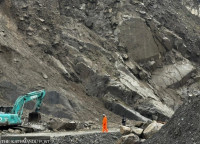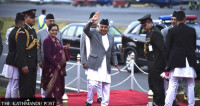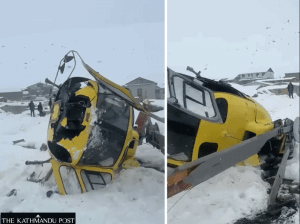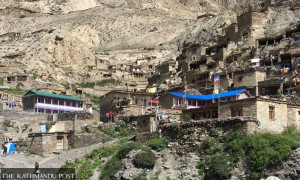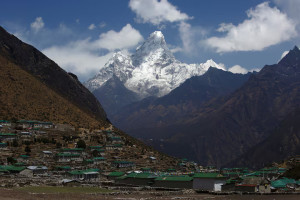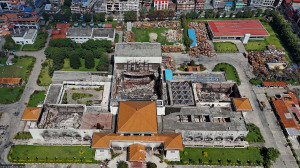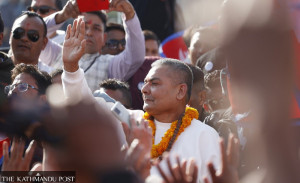National
Government targets too ambitious and unrealistic, experts say
Budget contains a list of populist schemes—most of them plain impractical, insiders say.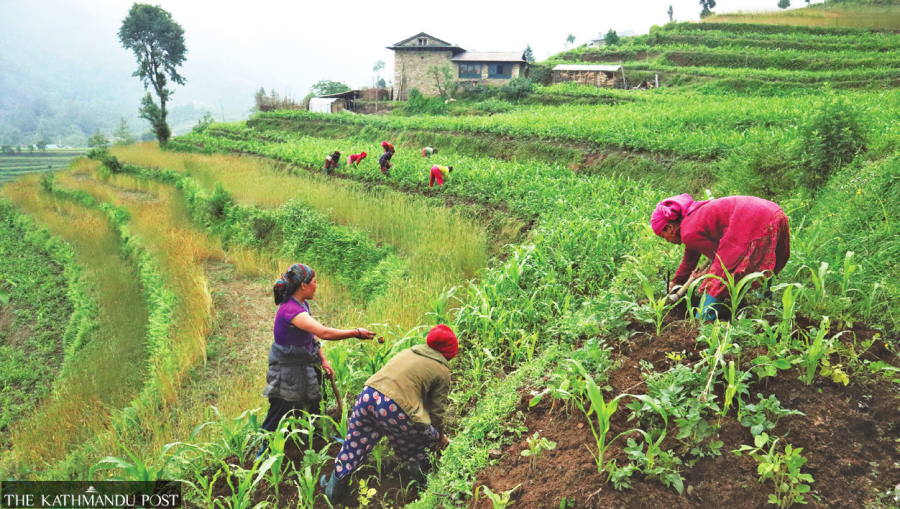
Prithvi Man Shrestha
Ambition isn't a bad thing in a project. But being too ambitious causes blowouts at some point, experts say.
Looking towards the upcoming federal and provincial elections, the government has announced a slew of projects and programmes in the budget for the next fiscal year, which experts say look overly “ambitious and unrealistic”.
Here are a few examples.
The government says it will increase the country’s cereal production by 30 percent.
There is also the promise to create a Rs500 billion microfinance fund to finance the agriculture sector, but the government has not allocated a single penny for the reserve.
The budget has announced an 8 percent cash incentive for exports. It has also set a target to neutralise the trade deficit in five years. The government has aimed to achieve an economic growth rate of 8 percent and keep inflation at 7 percent.
For years, the government has been saying that government offices will use products manufactured domestically to encourage domestic production.
Likewise, the government declared it would construct a Chatara-Sagarmatha expressway in partnership with the private sector. So far, there is no record of a single road being built by the private sector in the country.
While experts say that the country’s tourism industry will take at least two years to reach pre-pandemic levels, the government has aimed to increase arrivals to a million by the next fiscal year.
The government plans to lengthen the stay of tourists in Nepal to 17 days in 2022-23 from 12.7 days in 2019.
The Health Ministry says it plans to provide free testing for hypertension, diabetes, renal function, liver function, heart problems and cervical cancer to people above 40 years of age. Experts say this scheme requires a huge budget and plenty of manpower and resources, and that it is not doable.
This year's budget has repeated the promise to provide seed capital to start-ups to promote youth entrepreneurship and innovation, but a work procedure needed to make this happen is yet to see the light of day.
The government has announced providing one electric stove to each Nepali family free of cost through the local governments in order to reduce the state’s burden of subsidising liquefied petroleum gas (LPG). However, it is not clear how this will be achieved, given the reluctance of householders to switch to electric cooking because of outages and power tripping.
“The targets are overly ambitious,” said Tulasi Sitaula, a former government secretary. “The government has been bringing ambitious budgets for the past several years. These overly ambitious budgets never get properly implemented.”
Experts say the list of populist programmes is long, and most of them are plain impractical.
The World Bank says that credible government budgets are needed to achieve the Sustainable Development Goals.
The degree of implementation of the national budget is an indicator of the government’s ability to deliver public services and achieve development objectives.
The World Bank report says a credibly implemented budget has only small deviations from the approved one, both in terms of overall expenditure and revenues and in terms of the allocation between programmes.
“If expenditure is under-executed, beneficiaries may not receive expected services. Over-executed budgets may result in budget deficits and increased public debt levels and can influence macroeconomic stability,” the report said.
According to the World Bank, more than half of high-income countries are within plus or minus 5 percent of the budget spending, while almost half of low-income economies show more than plus or minus 10 percent deviation in budget execution.
Nepal too is not exceptional for pledging high and delivering low when it comes to budget presentation.
“In this year’s budget too, there are many populist programmes to influence the elections instead of resolving the problems faced by the economy,” Pushpa Raj Kadel, a former vice-chairman of the National Planning Commission, told the Post in a recent interview.
Among several goals, the announcement to increase cereal production by 30 percent to 14 million tonnes from 10 million tonnes seems too ambitious, which experts say is one of the greatest ironies.
This is because the country is facing a severe shortage of chemical fertilisers without which crops cannot grow. The chemical fertiliser shortage has become a perennial problem.
The government aims to boost paddy production to 6.66 million tonnes in the next fiscal year from the projected output of 5.13 million tonnes in the current fiscal year.
The government has also declared boosting maize production to 4 million tonnes from the projected 3.1 million tonnes in this fiscal year. The target for wheat production in the next fiscal year has been set at 2.7 million tonnes from the projected figure of 2.14 million tonnes in the current fiscal.
Nepal’s annual agriculture growth rate has been less than 3 percent in the last eight years. The highest growth rates of 5.17 percent in fiscal 2016-17 and 5.16 percent in 2018-19 were achieved only due to nature's gift of very good monsoons.
“The government’s target of increasing cereal production is simply impossible as there is no history of such a growth in cereal production in the country,” said Hari Dahal, a former government secretary with extensive knowledge of agriculture extension.
Even India had not achieved 30 percent growth in cereal production when it implemented the Green Revolution in the 1960s.
Dahal said that the ongoing global shortage of chemical fertilisers due to the Russia-Ukraine war and limited irrigation facilities would impede any effort to boost cereal production significantly in the next fiscal year.
Even before the Russia-Ukraine war, the government would habitually fail to import chemical fertilisers as per its own plan, leading to annual shortages.
The government had planned to buy 297,000 tonnes of chemical fertilisers in the current fiscal year, but it secured only 122,000 tonnes. It was able to distribute 183,000 tonnes of fertilisers which included inventory carried over from the last fiscal year, according to the survey.
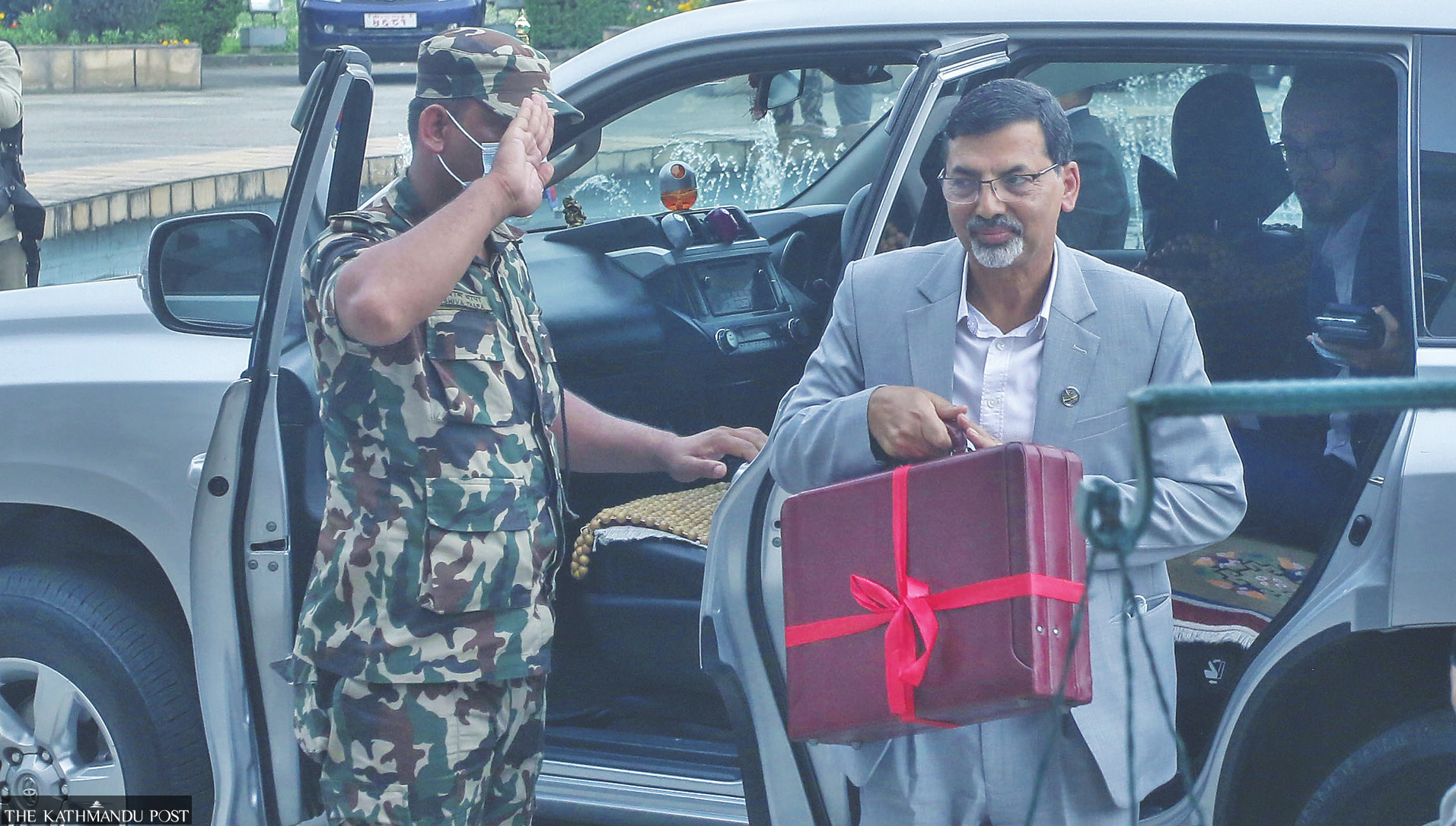
Irrigation facilities had expanded to just 1.59 million hectares as of mid-March this year while the cereal acreage stood at 3.48 million hectares.
“Round-the-year irrigation facilities are available only to 25-30 percent of land under cereal cultivation,” said Dahal.
He added that there was little chance of increasing the cereal acreage because of out-migration of many Nepalis for jobs.
Regarding the promise of creating a separate microfinance fund worth Rs500 billion, the government has not yet clarified whether banks and financial institutions would have to invest in the agriculture sector through the fund or do it on their own.
The government has stated that banks and financial institutions will have to contribute resources to the fund.
Experts say the country is less likely to double exports and decrease imports by 20 percent as promised in the budget. They are of the view that the country’s export figures have swelled over the last two years because of the re-export of soybean and palm oils.
“Nepal’s exports increased in recent times due to the re-export of vegetable oils like soybean and palm which are not produced here,” said former commerce secretary Purushottam Ojha.
“But this is not a sustainable business because exports have boomed by taking advantage of duty differences imposed by Nepal and India.”
He said reducing imports and achieving balanced trade in five years was challenging because there has been high dependency on imports for years. As of the first 10 months of the current fiscal year, the country exported goods worth Rs173.34 billion and imported goods worth Rs1.6 trillion, according to the Department of Customs.
The target set for tourist arrivals is equally ambitious. The government has aimed to attract 1 million foreign tourists in the next fiscal year.
In 2021, Nepal received just 150,962 foreign visitors, the lowest arrivals figure since 1977 when the country hosted 129,329 tourists, a year after tourist numbers in Nepal reached six digits for the first time.
Deepak Raj Joshi, director general of the Confederation of Nepalese Industries, said the government target was near impossible to meet because Nepal cannot expect arrivals from China, the second largest tourist market in normal times, for at least another year.
“The number of international airlines serving Nepal has come down to less than two dozen from more than 30 in normal times.”
He said that rising flight prices will also affect tourist arrivals to Nepal as around 80 percent of the total foreign tourists come by air. In 2019, Nepal received approximately 1.2 million foreign tourists.
The plan to construct a Chatara-Sagarmatha fast track by mobilising the private sector has also been greeted with ridicule on social media.
Speaking in Parliament on Tuesday, former finance minister Bishnu Poudel said the idea of constructing this road by involving the private sector was baseless. “Where will we reach by anticipating that the private sector will build this road?” he asked.
Former secretary Sitaula said that involving the private sector to build highways at the moment was next to impossible as it has been difficult to woo them even by offering variability gap funding and equity investment from the government under a public-private partnership modality.
Earlier, the private sector’s effort to build a Kathmandu-Hetauda tunnel highway had failed miserably. The government had awarded the contract to build the 58-km highway to Nepal Purwadhar Bikas Company Limited which had planned to execute the construction under a public-private partnership model.
“No private sector company has built a highway in the country so far,” said Sitaula. “In fact, the time is not yet ripe to attract the private sector to road building.”




 18.12°C Kathmandu
18.12°C Kathmandu

